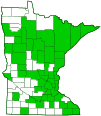Yellow Fairy Cups
(Calycina citrina)
Conservation • Description • Habitat • Ecology • Distribution • Taxonomy
Conservation Status |
|||
| IUCN Red List | not listed |
||
| NatureServe | not listed |
||
| Minnesota | not listed |
||
Description
Yellow Fairy Cups, also called Lemmon Discos, is common and widespread. It is found in North America, Central and South America, Europe, Asia, and Australia. In North America it is especially common in the eastern United States and the on west coast. It is saprobic, obtaining nutrients from rotting wood. It grows in dense clusters on dead and decaying logs and stumps of hardwoods and sometimes conifers. In Minnesota it can be seen from summer through fall.
The fruiting body is a small, saucer-shaped cup with or without a tiny stalk. The cups are 1 ⁄32″ to ⅛″ (1 to 3 mm) in diameter and 1 ⁄32″ to 1 ⁄16″(1 to 2 mm) tall. The species epithet citrina means “lemon yellow” but the upper surface of the cups may be bright lemon yellow or bright orangish-yellow. The underside is the same color but may be paler. They are globular when they first appear, expanding to saucer-shaped or disc-shaped as they mature. The stalk, if present, is rarely more than 1 ⁄32″ (1 mm) long.
The spore print is white.
Similar Species
Habitat and Hosts
Dead and decaying logs and stumps of hardwoods and conifers
Ecology
Season
Late summer and fall
Distribution |
||
|
Sources Biodiversity occurrence data published by: Minnesota Biodiversity Atlas (accessed through the Minnesota Biodiversity Atlas Portal, bellatlas.umn.edu, 10/18/2025). |
|
| 10/18/2025 | ||
Occurrence |
||
Common and widespread |
||
Taxonomy
Kingdom
Fungi (Fungi)
Subkingdom
Dikarya
Phylum
Ascomycota (Sac Fungi)
Subphylum
Pezizomycotina (Sac Fungi and Lichens)
Class
Leotiomycetes
Order
Helotiales
Family
Pezizellaceae
Genus
Calycina
Genus
This species was classified as Peziza citrina when it was first described in 1789. In 1885 it was transferred to the genus Calycella. For many decades it went under the names Calycella citrina or Helotium citrinum, depending on the preference of the author. In 1974 it was noted that Calycella was a synonym for Calycina, so Helotium citrinum was transferred to the genus Bisporella. Some time before 2008, all Calycella species were transferred to the genus Bisporella. In 2019, morphological and molecular analysis showed Bisporella citrina to be separate from the species of Bisporella, and it was transferred to the genus Calycina.
Subordinate Taxa
Synonyms
Bisporella citrina
Bisporella claroflava
Bisporella confluens
Calycella citrina
Calycella citrina var. citrina
Calycella claroflava
Calycella flava
Calycina clariflava
Calycina flava
Helotium citrinum
Helotium citrinum ssp. turfaceum
Helotium citrinum var. confluens
Helotium citrinum var. pallidum
Helotium claroflavum
Helotium confluens
Helotium flavum
Octospora citrina
Pachydisca nobilis
Peziza citrina
Peziza citrina ssp. citrina
Peziza citrina var. albicans
Peziza citrina var. albida
Peziza claroflava
Peziza confluens
Phialea citrina
Phialea citrina var. albicans
Common Names
Lemon Discos
Minute Lemon Cups
Yellow Fairy Cup Fungus
Yellow Fairy Cups
Glossary
Saprobic
A term often used for saprotrophic fungi. Referring to fungi that obtain their nutrients from decayed organic matter.
Visitor Photos
Share your photo of this fungus.
This button not working for you?
Simply email us at info@MinnesotaSeasons.com.
Attach one or more photos and, if you like, a caption.
Luciearl |
||
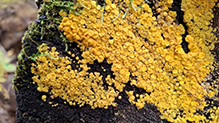 |
||
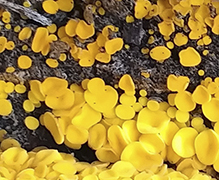 |
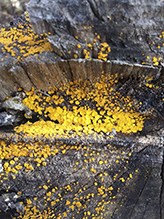 |
|
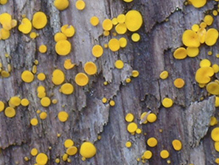 |
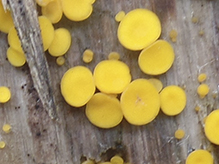 |
|
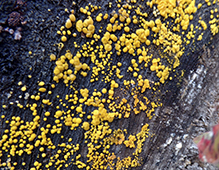 |
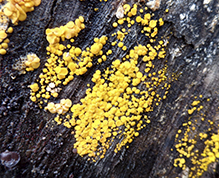 |
|
Jennifer Boyle |
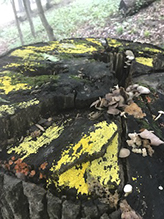 |
Cynthia Schroeder |
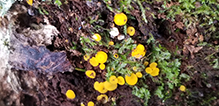 |
MinnesotaSeasons.com Photos
|

Slideshows
Voskovička citronová - Calycina citrina
Jiří Laštůvka - Kudláček

Visitor Videos
Share your video of this fungus.
This button not working for you?
Simply email us at info@MinnesotaSeasons.com.
Attach a video, a YouTube link, or a cloud storage link.
Other Videos
Lemon Drop Fungi (Calycina citrina) on Log
Carl Barrentine

Visitor Sightings
Report a sighting of this fungus.
This button not working for you?
Simply email us at info@MinnesotaSeasons.com.
Be sure to include a location.
MinnesotaSeasons.com Sightings |
|

